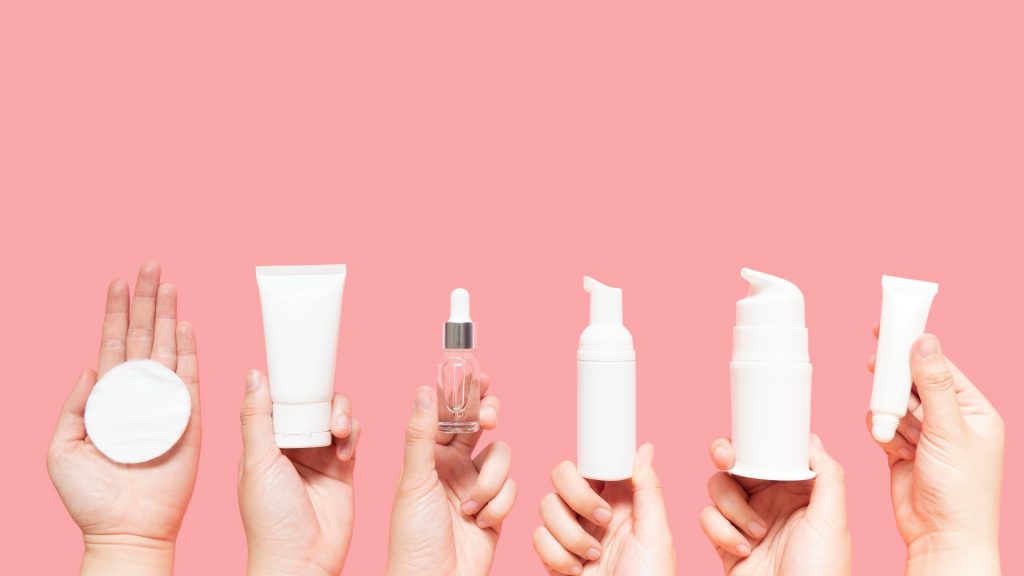What Is Skincare Layering?

Although used for decades in Asia, skin layering is reasonably new to Americans. Skincare layering was introduced in 1968 when Clinique was the first on the main beauty scene as they presented a practical three-step line of skincare products. Americans embraced the routine and welcomed a multi-step process to achieve beautiful skin. The steps increased significantly when Allure magazine brought further attention to the layering process of skincare from Asia. Many eager to reach maximum potential jumped on the multi-step skincare routines that sometimes equaled ten steps or more. As trends do, in 2019, skincare layering became overshadowed by what skincare specialists call “skip care.” Skip care is the opposite approach to skincare layering and seeks combined products that serve many purposes in one. Ultimately, this type of care reduces steps and simplifies skincare routines. As the new wave came and went, most people have found a happy medium with four or five steps twice a day. There are keys to skincare layering that are worth noting regardless of how many steps are involved because layering properly is critical.
Skincare Layering for Best Results
Just like you wouldn’t put on a heavy sweater under a t-shirt or a snug jacket, skincare layering requires the same thought process to make sure it works. Skincare layering follows the same order as other skincare routines, beginning with cleansing the skin, then treatment serums, and lastly, adding protection for the skin. If products are applied in the correct order, they absorb better, and the active ingredients can do their job.
Cleansing the skin is essential to preparing the skin for any treatments that are applied. Toners are used following the cleanser, further hydrating and preparing the skin. The first steps in a skincare routine ensure the skin is clean and prepped to absorb all the benefits intended. Serum products or treatments are right smack in the middle of skincare layering. Serum treatments may include brighteners or firming products. These are usually a significant investment, so doing everything possible to allow them to work best is wise. The last step of skincare layering should be protecting the skin. At night, this might be a face oil or, in the morning, sunscreen. Oil and sunscreen create a barrier, so putting them on before anything else blocks it from working. If you choose to use face oil, and apply it ahead of other products, they simply will not absorb. If you apply sunscreen before other daytime products, those will not absorb either. Think of face oils and sunscreens as a shield to protect your skin. Face oils can be very effective but follow the directions carefully.
Skincare Layering by Consistency
Often, the question is what to do when a product in skincare layering doesn’t neatly fit in the cleansing, treatment, or protection category. With as many skincare products are available, there are bound to be several that don’t quite fit. This is where using products in order of consistency is helpful. As a general rule of thumb, work from watery substances to thicker ones (think back to the bulky sweater before the t-shirt again). Thicker formulas will prevent thinner ones from penetrating the skin as they should. The exception to this is any dermatologist’s prescription treatment for a skincare condition should go directly after cleansing and toner unless advised otherwise. The active ingredients in any prescription will have the best opportunity to go deeper after cleaning and before any other products. If you are doing skin care treatment with a licensed dermatologist, share what other products you are planning to use in your routine to ensure you aren’t working against the process or damaging your skin.
Choosing Skincare Products
There are so many products available for skincare that it is often hard to decide which are best. Everyone’s skin is different, and it is not uncommon to buy products that counter the effects of another, or the combination of products is doing more damage than good. Often, people purchase products that promise to manage oily skin when they do not have oily skin. Someone with experience in skincare can help identify which products will target any skincare concerns. People with darker skin may also benefit from using products designed specifically for colored skin. Some dermatologists specialize in darker skin, and finding the right one is overwhelmingly important.
It is highly recommended to ask a licensed dermatologist about your skin type and what products or active ingredients to avoid. Many reputable dermatologists understand budgets and recommend manageable and affordable products for clients so they can sustain a healthy skincare routine. If you are paying for skincare products, it is wise to use them properly to get the most for your investment. It is also essential to remember simpler is not always better, especially when it comes to your skin.
